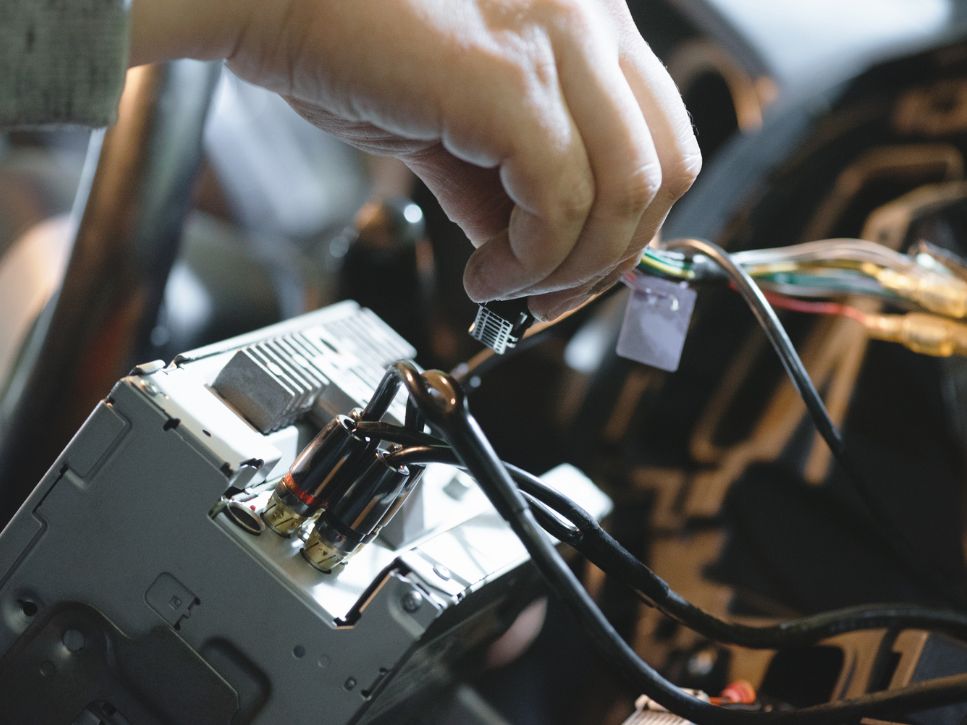
Are you tired of your car audio system sounding lackluster and dull? One quick fix that can make a huge difference is properly setting the gain and crossover settings on your car amplifier. These seemingly small adjustments can drastically enhance the sound quality, making your music crisp, clear, and full-bodied. In this blog post, we’ll go over everything you need to know about setting these important features in order to get the most out of your car audio system. So buckle up and let’s dive into it!
How do you set crossover and gain?
Setting the crossover and gain on your car amplifier can seem daunting, but it doesn’t have to be. First, let’s talk about setting the gain. The gain controls how much power is going from your amp to your speakers. Too high of a gain can result in distortion, while too low of a gain will make your music sound weak and flat.
To set the proper gain level, start by turning down all volume levels on your head unit to zero. Then slowly turn up the volume until you hear distortion or clipping in the music. Once you hear this distortion, back off just slightly until it disappears.
Now onto setting the crossover frequency. A crossover is designed to split up different frequencies and send them to their respective speakers for optimal sound quality.
👉The Impact of Impedance on Car Amplifier Performance and Power Output
The first step in setting the crossover frequency is determining what type of speaker system you have - component or coaxial? Component systems require separate crossovers for each speaker, while coaxial systems use one built-in crossover per pair of speakers.
Once you’ve determined what type of system you have, set your crossover frequency based on the specifications provided by either your amplifier or speaker manufacturer’s recommendations for optimal performance.
👉Understanding RMS Power Ratings in Car Amplifiers. What You Need to Know
By properly setting both crossover and gain settings on your car amplifier, you’ll achieve better sound quality that will truly enhance your driving experience!
What does gain do on a car amplifier?
Have you ever wondered what the gain control on your car amplifier does? Simply put, it adjusts the level of the input signal that is sent to the amplifier. This can affect both volume and sound quality.
A higher gain setting can result in a louder output from your speakers, but it can also introduce distortion if set too high. On the other hand, a lower gain setting may not produce enough volume for your liking.
It’s important to find the right balance with your gain settings. Start by setting it low and gradually increasing it until you reach a comfortable listening level without any noticeable distortion. Keep in mind that different types of music and sources may require adjustments to this setting.
Properly adjusting your gain settings will ensure that you’re getting optimal performance out of your car audio system while avoiding any unwanted distortion or damage to your equipment.
What does a crossover do?
A crossover is an essential component of a car audio system. It’s responsible for dividing the audio signal and sending it to the appropriate speakers, ensuring that each speaker receives only the frequencies it can handle.
The primary function of a crossover is to prevent distortion in your sound output. When you send all frequencies to all speakers, it overloads them, causing sound quality degradation and even damage to your equipment.
By separating high-frequency signals from low frequency ones, crossovers allow each speaker type (tweeter, mid-range driver or woofer) to do what it does best without interference from other drivers. In doing so, they produce cleaner and crisper sounds with accurate tonality.
There are two types of crossovers: active and passive. Passive crossovers are more commonly found in factory-installed sound systems because they’re cheaper than their active counterparts. Active crossovers tend to offer better precision for tuning since they’re installed between amplifiers and speakers instead of being built into factory stereo units like passive crossovers.
In summary, if you want top-quality sound output on your car audio system – install a good quality crossover!
What Is A Crossover Frequency?

A crossover frequency is the point at which a car amplifier splits the audio signal into different frequencies, allowing it to be sent to different speakers. In other words, it’s the frequency at which one speaker “hands off” its portion of the sound spectrum to another speaker.
When you listen to music or any audio content through your car stereo system, each type of instrument or vocal has a specific range of frequencies that it produces. For example, bass-heavy instruments like drums and bass guitars produce lower-frequency sounds than higher-pitched instruments like cymbals and flutes.
By setting the crossover frequency on your car amplifier correctly, you can ensure that each type of sound is delivered only to the speakers best suited for reproducing that particular frequency range. This results in clearer and more accurate sound reproduction throughout your entire vehicle.
In general, subwoofers are designed to handle low-frequency sounds (typically below 100 Hz), while midrange speakers handle frequencies between around 100 Hz and 5 kHz. Tweeters are responsible for handling high-pitched sounds above about 5 kHz. By setting your crossover frequency appropriately based on these ranges, you can achieve optimal performance from all your speakers.
How are crossovers helpful for speakers?
Crossovers play a crucial role in optimizing the sound quality of your car audio system. They help to ensure that each speaker in your car gets only the frequencies it is designed to handle, which maximizes efficiency and reduces distortion.
When speakers are fed with frequencies they can’t handle, they start distorting and even get damaged over time. Crossovers prevent this from happening by filtering out these harmful frequencies before they reach the speakers.
By separating different frequency ranges and directing them to their respective speakers, crossovers allow for better clarity and separation of sounds. This means that you can hear instruments or vocals more clearly because each speaker is handling its own distinct range of frequencies.
Crossovers also offer flexibility when designing a car audio system. You can choose between passive crossovers (built into the speaker) or active crossovers (separate components), depending on your preference and budget.
In summary, using proper crossover settings ensures optimal performance from each speaker in your car audio system while preventing damage caused by unwanted frequency ranges.
Steps to Properly Set the Gain and Crossover Settings on Your Car Amplifier:
1. Prepare Your System:
- Turn off all audio enhancements and equalizer settings on your head unit.
- Set all tone controls, bass boosts, and loudness settings to their neutral or “flat” positions.
2. Disconnect the Speakers:
- Disconnect all speakers from the amplifier to prevent any potential damage during the setup process.
3. Set the Gain Control:
- Locate the gain control on your amplifier. It is usually labeled as “Gain” or “Level.”
- Set the gain control to its minimum position (fully counterclockwise).
- Start playing a track with consistent and moderate volume on your head unit.
4. Adjust the Gain Control:
- Gradually increase the gain control until you hear distortion or clipping in the audio.
- Once distortion is audible, slowly turn down the gain control until the distortion disappears.
- This ensures that the amplifier is providing sufficient power without introducing distortion.
5. Set the Crossover Frequency:
- Locate the crossover control on your amplifier. It may be labeled as “Crossover” or “Frequency.”
- Determine the appropriate crossover frequency for your speakers and subwoofers. This depends on the speaker specifications and personal preference.
- Set the crossover frequency to the desired point (e.g., 80Hz for a subwoofer).
6. Adjust the Crossover Slope:
- Some amplifiers have adjustable crossover slopes (e.g., 12dB/octave, 24dB/octave).
- Choose the appropriate slope setting based on your speaker setup and desired sound quality.
7. Reconnect the Speakers:
- Once the gain and crossover settings are adjusted, reconnect the speakers to the amplifier.
8. Test and Fine-tune:
- Play various audio tracks and listen carefully to ensure the sound is balanced and free from distortion.
- Make slight adjustments to the gain and crossover settings if necessary to achieve the desired sound quality.
9. Finalize the Settings:
- Once you are satisfied with the sound performance, securely tighten the gain and crossover controls to prevent accidental changes.






